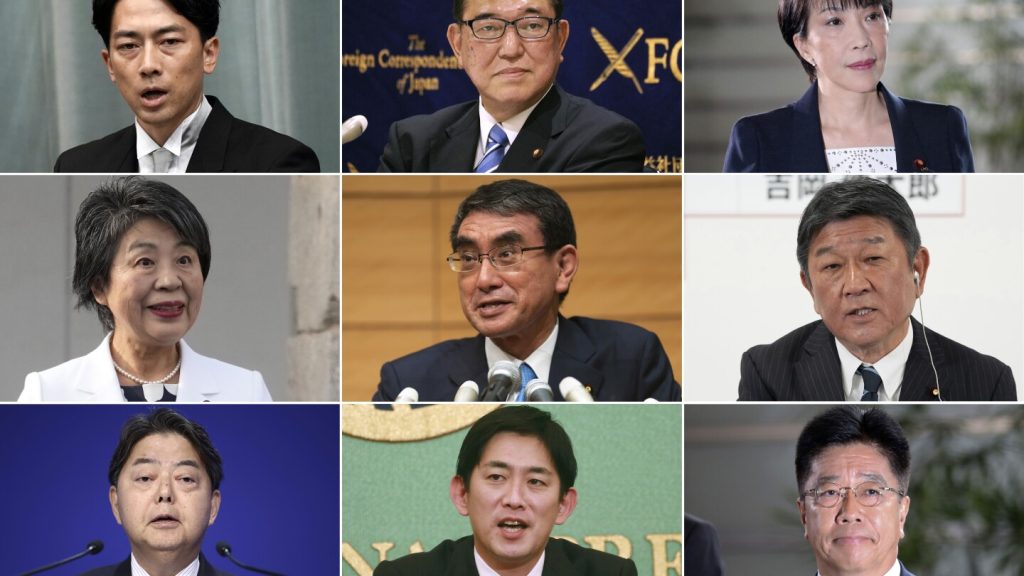In Tokyo, a record nine candidates are running in Japan’s ruling party election to replace outgoing Prime Minister Fumio Kishida. Among the top contenders are a former defense minister, a relatively young son of a popular former prime minister, and the economic security minister who could be the country’s first woman prime minister. The election is set to take place on Friday, and no candidate is expected to win a majority in the first round, leading to a second round between the top two vote-getters.It is reported that Shigeru Ishiba, a 67-year-old former banker, is running for the leadership position for the fifth time, asserting that this will be his final battle. Despite his longstanding popularity among voters, Ishiba has faced challenges in gaining support from fellow party lawmakers. However, his experience, stability, and expertise are seen as strengths for the party as they prepare to face the main opposition Constitutional Democratic Party of Japan’s new leader, former Prime Minister Yoshihiko Noda.
Shinjiro Koizumi, the son of popular Prime Minister Junichiro Koizumi, is another top contender in the election. At 43 years old, Koizumi would be Japan’s youngest prime minister if elected. Despite his relative lack of experience, he has been popular among voters and is supported by former Prime Minister Yoshihide Suga. Koizumi has pledged to push for reforms that provide more choices in careers and life paths. He also supports paternity leave and same-sex marriage. However, some of his policy proposals, such as easing regulations on dismissing workers, have stirred controversy.
Sanae Takaichi, the economic security minister, is making her second bid to become Japan’s first female leader. A protégé of former Prime Minister Shinzo Abe, Takaichi is a staunch conservative who attracts the right wing. She has emphasized fortifying Japan’s resilience to natural disasters and security risks, strengthening cyber and space defense, and creating a Cabinet-level intelligence bureau. Takaichi opposes same-sex marriage and the proposal to allow married women to keep their maiden name, and supports the imperial family’s male-only succession. Her ties to members implicated in a slush fund scandal have been seen as a potential weakness.
Other candidates in the election include Yoshimasa Hayashi, Takayuki Kobayashi, Toshimitsu Motegi, Yoko Kamikawa, Taro Kono, and Katsunobu Kato. Hayashi is the chief Cabinet secretary and a former foreign minister known for his policy expertise. Kobayashi is a rising policy guru among the younger generations and a conservative supporter of Takaichi. Motegi is the LDP’s secretary general and a tough negotiator known for his foreign and trade minister roles. Kamikawa is the foreign minister who has pushed for initiatives on “women, peace, and security.” Kono, the digital minister, has been a maverick for criticizing party policies and now supports nuclear energy. Kato, a former health minister, shares conservative views and seeks to double income through his campaign policies.
Overall, the ruling party election in Japan is set to determine the next Prime Minister following Fumio Kishida’s departure. With a record number of candidates vying for the position, including prominent figures such as Shigeru Ishiba, Shinjiro Koizumi, and Sanae Takaichi, the outcome of the election will have significant implications for the future direction of the country. The candidates have put forth a range of policy proposals and priorities, emphasizing issues such as disaster management, gender equality, security, and economic growth. As the election unfolds, all eyes are on Tokyo as Japan waits to see who will emerge as the next leader of the ruling party and potentially the next Prime Minister.


